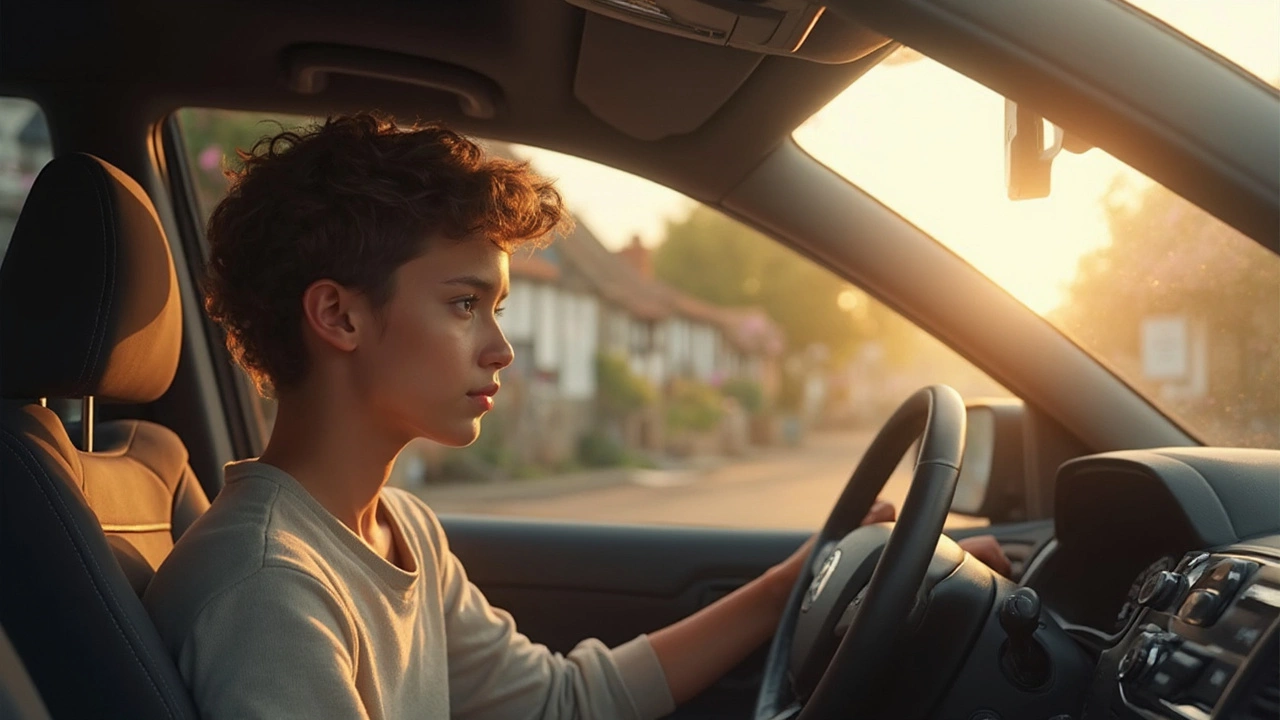Your first driving lesson is an exciting milestone, but let's be honest, it can also be a bit nerve-wracking. You're not just sitting behind a wheel; you're about to command a vehicle! But hey, breathe in and out, because being a little prepared can make a huge difference.
First off, it's totally normal to feel anxious. You're about to learn something new, after all. The trick is to keep that anxiety in check. Try not to overthink it. Remember, even the best drivers were once beginners.
Now, for essentials. Get familiar with the car's controls - you don't have to know it all by heart, but knowing your brake from your accelerator will help. And here's a pro tip: shoes matter more than you think! Go for something comfortable and flat, so you've got full control over those pedals.
Mental Preparation
Before you even think about turning that ignition key, getting your mind in the right place is crucial. A strong mental game can turn a potentially stressful situation into a walk in the park. Here’s how you can gear up mentally for your first driving lesson.
Breathe and Relax
Don’t underestimate the power of deep breathing. It sounds cliché, but it works. Take slow, deep breaths to calm your nerves. It helps reduce anxiety and keeps your focus sharp.
Set Realistic Expectations
Let’s be real here. You're not going to be Lewis Hamilton on day one. Acknowledge that learning to drive is a process, and it's okay to make mistakes. In fact, mistakes are part of learning, so cut yourself some slack.
Visualization
Visualize yourself having a positive experience. Picture yourself sitting confidently behind the wheel, following instructions smoothly. Researchers have found that visualization can boost performance significantly, so give it a try before your lesson.
Get Familiar with Instructions
If possible, learn some basic road signs and rules beforehand. It will make the instructor’s guidance easier to follow and decrease your stress levels.
Create a Comfort Zone
If certain music relaxes you, ask your instructor if you can have it on at a low volume during your lesson. Creating a familiar environment can ease your anxiety.
- Aim to arrive early and take a moment to relax.
- Wear comfortable clothing — nothing too tight. You want to be able to move freely.
- Remember to eat a light snack. You don't want hunger pangs distracting you!
Arming yourself with these mental strategies can go a long way to make your first driving lesson enjoyable and stress-free. Once you're calmly behind the wheel, you're in a much better position to focus on everything else.
Essential Tips
The first driving lesson is all about easing into it and getting a feel for your vehicle. There are some practical tips that can turn a nerve-wracking experience into a more manageable one. Let's break it down.
Check Your Seat and Mirrors
Before you even start the ignition, make sure your seat is adjusted to a position where you can comfortably reach all the controls. Adjust your mirrors for a clear view of what's behind and around you. This might seem basic, but having your mirrors set right is one of those driving lesson tips that people often overlook.
Get a Grip on the Controls
Spend a few minutes getting to know the controls of the car. Locate the indicators, wipers, and lights. Not only will this help you feel more at ease, but it's also essential if you find yourself needing them on the go.
Stay Calm and Composed
Your mindset plays a huge role in how well your first lesson goes. Remember to stay relaxed and don't hesitate to ask questions. Your instructor is there to help. Keep breathing – remaining calm can actually improve your ability to react and remember what you've learned.
Practice Basic Skills
- Accelerating and braking gently to get a feel for the car’s sensitivity.
- Understanding how the steering works, especially during turns.
- Getting comfortable with changing gears if you’re driving a manual; otherwise, practice easing into drive on an automatic.
Keep a Positive Attitude
Mistakes will happen – they're part of learning. Focus on your progress rather than perfection. Each time you practice, you’ll notice improvements. Celebrate small victories, like smooth braking or making a successful turn.
By following these essential tips, you’ll not only survive your first driving lesson but also set the groundwork for becoming a confident and competent driver. Happy learning!

Understanding Basics
Before you even get in the car, it's good to have some basics down pat. No one's asking you to know the entire driver's manual, but having a grasp of key concepts can really make your first driving lesson smoother.
Get to Know the Gears
Whether you're learning on an automatic or manual, understanding how gears work is crucial. In an automatic, your main concern is the D, R, and P. For manual, it's all about that clutch control. Don't sweat it if it feels awkward at first; it’s like learning a dance. You'll find your rhythm with practice.
The Pedals: Brake, Gas, and Clutch
Let’s break it down. The accelerator, or gas pedal, is on the right. The brake is the one in the middle. And if it's a manual car, you have the clutch on the far left. Steady pressure and balance are key, so practice gently pressing and releasing each pedal.
- Right foot for gas and brakes.
- Left foot for clutch (manual only).
- Always keep your heel on the floor for more control.
Mirror, Mirror
Your first driving lesson is no magic show, but mirrors play a big role. Properly adjusted mirrors are your trick to seeing all around you. The rearview mirror lets you see directly behind, while side mirrors offer a wider perspective. Adjust them before you start driving.
Steering 101
Think of the steering wheel as the ship's helm. You’re the captain now. Keep a relaxed grip, usually at the 10 and 2 o'clock positions. Don’t strangle it; you're not wrestling an alligator!
Handy Fact to Remember
| Type | Time it Takes |
|---|---|
| Automatic with Power Steering | About 5 hours |
| Manual with Basic Steering | About 10 hours |
Research suggests learners often feel comfortable with steering after these hours of practice. This might vary, but it gives a sense of when things will start clicking.
Common Fears
Starting your first driving lesson can stir up a lot of common fears, but understanding them is the key to overcoming them.
Fear of Making Mistakes
One of the biggest fears is making mistakes, right? Guess what? You're going to make them and it's absolutely okay! In fact, it might interest you to know that even seasoned drivers make mistakes now and then. The good thing is, your instructor is there to guide you safely through every twist and turn. So, embrace those slip-ups as learning opportunities, not stigmas.
Fear of the Unknown
Not knowing how things will pan out can be really unnerving. Will you stall? Will you mix up your pedals? These are fears that everyone grapples with, especially when they start off. A practical tip: practice focus and relaxing techniques to help keep calm. Most students find that after a couple of lessons, their confidence builds naturally.
Traffic Anxiety
Driving in traffic for the first time can be downright terrifying. Cars seem like they're everywhere, and you're wondering how not to turn into a wrecking ball. Take heart in knowing that your instructor will usually start you off in a quiet area, away from the chaos until you’re ready. Gradually, they’ll guide you into busier streets as your skills grow.
| Common Fears | Reality Check |
|---|---|
| Making Errors | Normal and part of learning |
| Stalling or Messing Up | Instructors expect this, you're learning! |
| Busy Traffic | Controlled exposure at first |
Don’t let these common fears get the better of your excitement for driving. Remember why you wanted to learn in the first place. With time, practice, and the right mindset, you'll conquer each fear and step closer to being a great driver.

